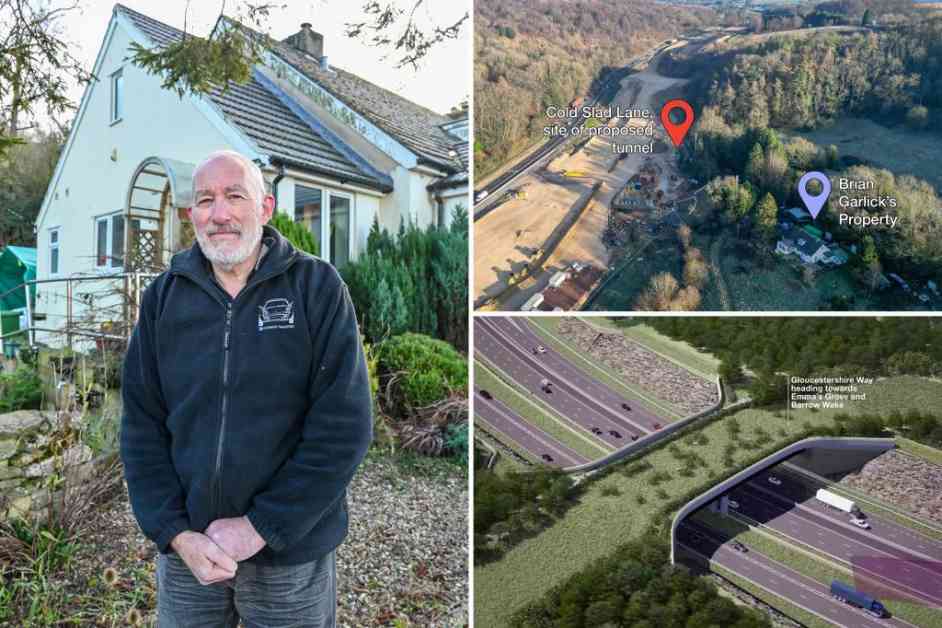Forced from Home: Impact of Highway Construction on 69-Year-Old – A Case Study
In a heart-wrenching tale of forced displacement, Brian Garlick, a 69-year-old pensioner, finds himself in the eye of the storm caused by the construction of the A417 Missing Link, a three-mile dual carriageway between Gloucester and Cirencester. Garlick, who has lived in his family home next to the project site, is now facing the harsh reality of having to navigate his way back to his roots through a tunnel that could cost up to a staggering $7.5 million.
The Shocking Reality
National Highways, the agency behind the road project, initially offered Garlick $940,000 to buy his property, providing him with a lifeline to start anew. However, that offer has since been retracted, leaving Garlick in a state of limbo as he contemplates his fate post-construction in 2027. The proposed tunnel, located a quarter mile from his home, is poised to become his only means of access once the road is operational, with its dimensions still shrouded in uncertainty.
A Story of Resilience and Struggle
Living in a caravan park during the construction phase, Garlick has been grappling with the emotional turmoil of being uprooted from the house he holds dear. With no clear resolution in sight, he finds solace in reminiscing about the cherished memories the house holds, intertwining his past with the uncertain future that lies ahead. The toll of this displacement is not merely financial but deeply personal, as Garlick navigates the complexities of loss and resilience in the face of adversity.
A Call for Compassion and Understanding
As the project unfolds, the human cost of progress comes into stark relief through Garlick’s narrative. His poignant plea for empathy and acknowledgment from National Highways underscores the need for a more humane approach to development projects that impact individuals and communities. In the midst of bureaucratic complexities and logistical challenges, it is essential to remember the human stories at the heart of such endeavors, urging stakeholders to prioritize compassion and communication in their interactions with those affected.
Through Garlick’s ordeal, we are reminded of the delicate balance between progress and compassion, urging us to reflect on the human dimensions of infrastructure projects that often remain hidden beneath layers of concrete and steel. As the road to completion stretches ahead, may Garlick’s resilience serve as a poignant reminder of the enduring spirit that perseveres against all odds, seeking solace in the echoes of the past and the hope of a brighter tomorrow.

